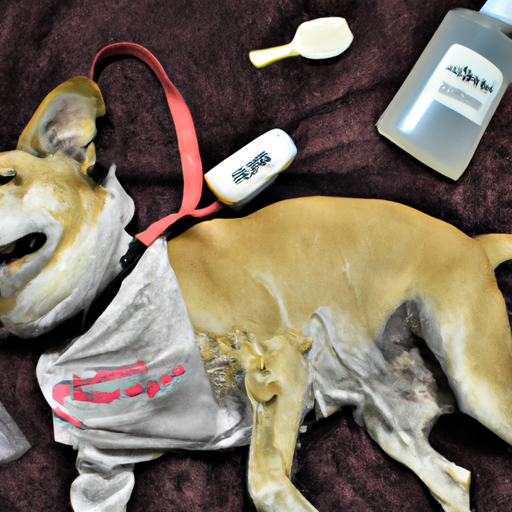As a caregiver, it can be heartbreaking to see your beloved pet infested with fleas. But don’t fret, we’ve got you covered. Here’s a comprehensive guide on how to get rid of fleas on your canine companions.
1. Understand the Enemy: Fleas
Fleas are tiny, wingless pests that thrive on warm-blooded hosts, with dogs being one of their favorites. They can be a nightmare to your pet, causing discomfort and even health issues like anemia and tapeworms.
- Lifecycle: Fleas go through four stages of life – egg, larva, pupa, and adult. Killing adult fleas alone won’t solve the problem; you need to target all life stages.
- Habitat: Fleas prefer warm and humid environments. They can live on your pet and in your home, especially in carpets, furniture, and bedding.
2. Use Flea Treatments for Dogs
There are various products available for treating fleas in dogs. The choice depends on your pet’s health, age, and lifestyle. Always consult your vet before starting any treatment.
- Spot-on Treatments: These are applied directly to your pet’s skin, usually on the back of the neck. They kill fleas on contact.
- Oral Medications: These pills or chewables are ingested by your dog, killing fleas once they bite.
- Flea Collars: These work by releasing chemicals that repel or kill fleas. They are effective for preventing future infestations.
| Treatment Type | Pros | Cons |
|---|---|---|
| Spot-on | Effective; Easy to apply | Can be pricey; Not suitable for all dogs |
| Oral | Fast-acting; Kills fleas at all life stages | Some dogs may have adverse reactions |
| Collar | Long-lasting; Prevents future infestations | Not as effective at killing existing fleas |
3. Clean the Environment
Treating your dog alone isn’t enough; you need to thoroughly clean your home to eradicate any fleas or eggs lurking around.
- Wash Bedding: Regularly wash your pet’s bedding in hot water.
- Vacuum Regularly: Pay particular attention to carpets, upholstery, and areas your dog frequents.
- Use Flea Sprays: Use sprays designed for homes. These can kill fleas and their eggs on contact.
4. Prevent Future Infestations
Once you’ve treated your pet and cleaned your home, maintain a flea-free environment by:
- Regular flea checks and grooming
- Keeping your yard clean and tidy
- Regular use of flea preventative treatments
5. Consult a Vet
If your dog is suffering from a severe infestation, or if the fleas persist despite your efforts, consult a vet. They can provide professional treatments and advice.
Frequently Asked Questions
Q: Can I use cat flea treatments on my dog?
A: No, certain ingredients are safe for cats but toxic to dogs.
Q: How long does it take to get rid of fleas?
A: It can take a few weeks to a few months, depending on the severity of the infestation.
Q: How often should I treat my dog for fleas?
A: Most treatments are monthly, but consult your vet for specific advice.
Remember, as a caregiver, your pet’s health and comfort are in your hands. Act promptly and wisely to keep them flea-free.



